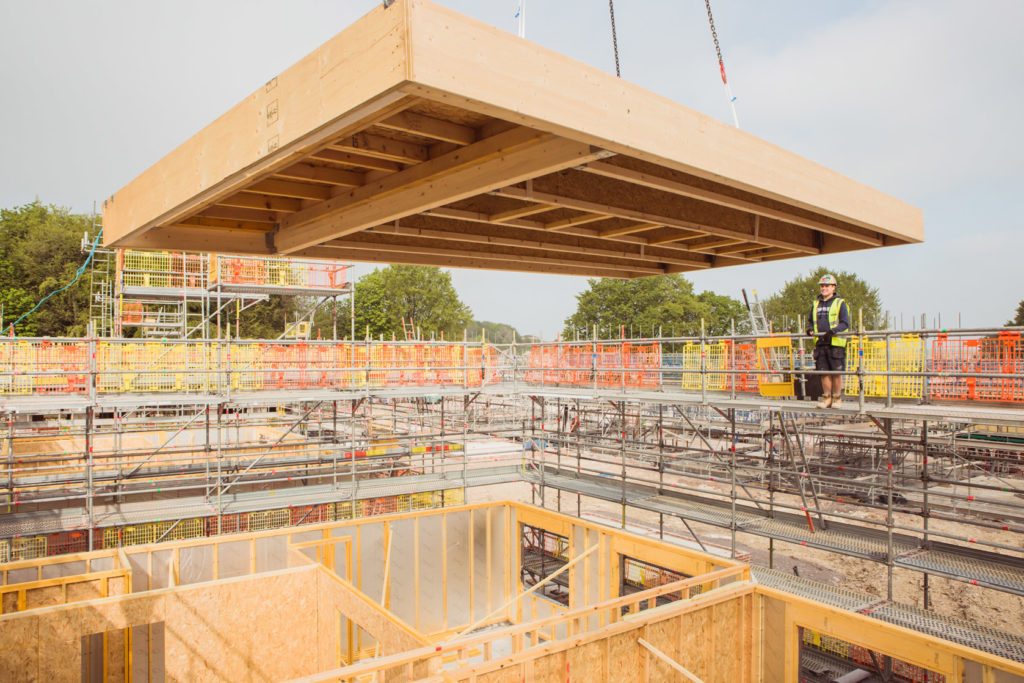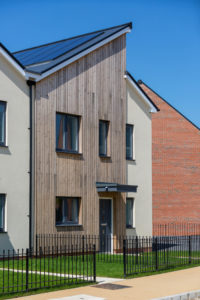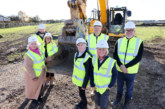There is no doubt that our physical and mental health has become more significant in recent years. And with nature and the natural world long associated with healing, many people are turning to the great outdoors to improve their well-being; whether it’s a walk in the park, sitting in the garden or bringing a little of the outside, indoors. Yet, for lasting impact, bigger steps must be taken to readdress the balance — in our homes, places of work, and right across the built environment. Steve Griffiths, Senior Design Manager at Taylor Lane Timber Frame, explains how modern methods of construction (MMC) can be beneficial for our welfare and happiness.
Traditionally, many UK homes have been built using masonry construction. Yet, design movements such as biophilic design are looking to encourage housebuilders and registered providers to consider construction methods, which promote wellness and well-being for occupants.
Biophilic Design
Derived from the word — biophilia, meaning ‘love of living things and nature, which some people believe humans are born with…’ (source: dictionary.cambridge.org), biophilic design is a term popularised by American biologist Edward O Wilson in the 1980s. ‘…he observed how increasing rates of urbanisation were leading to a disconnection with the natural world. With high rates of migration to urban settings in the developed world and soaring rates in developing countries — Biophilia is of ever-increasing importance to our health and well-being in the built environment. Biophilic Design uses these ideas as principles…’ (source: oliverheath.com)
Timber is one resource that can generate a positive biophilic response. In a survey by the Wood Window Alliance (WWA) 49% of homeowners stated that ‘having natural materials in their homes makes them feel discernibly happier than when surrounded by artificial materials.’ 67% of those surveyed cited timber as the ‘…material they would like to have more of in their homes.’
While this desire can easily be achieved with accessories and furniture, it can also be applied to the structure of the building — from windows and doors, to the construction of the property. Timber frame is a proven build method with financial and environmental benefits for all, and consequently, helps to promote mental and physical well-being.
 Benefits of Timber Frame
Benefits of Timber Frame
For the registered provider, builder and contractor, the speed and ease of timber frame construction offers both cost and time efficiencies. Offsite construction, such as timber frame also makes costing more predictable and allows for accurate budgeting. Add to this the management, support and organisation undertaken by the timber frame supplier rather than the contractor, and the positives far outweigh the negatives. Yet, it is worth bearing in mind that due to the faster build method, the real benefits are only fully appreciated by those with a well-managed and organised build schedule.
For residents, a timber frame house makes for a comfortable home. The thermal efficiency of timber means that the house will remain warmer throughout winter, and cooler during the summer months. It has the ability to heat up quickly and retain that heat for longer. This will ultimately, help to reduce running costs and energy bills. A resident living in a timber frame house in Herefordshire commented recently on the constant temperature in every room, this is one of the key advantages of this build method.
Timber is a natural insulator. It also goes beyond Building Regulation requirements without any filling of the cavity. In fact, it is far simpler to achieve a low U-value with timber frame than traditional build methods. To achieve a U-value of 0.19 W/m2K, a traditional build would usually need a wider wall construction than that of a factory manufactured timber wall panel. It would require a bigger cavity with more insulation and would have a negative impact on room size. On a housing development where every millimetre counts, the space saving can soon add up, providing valuable space to restricted plots.
 Sourcing Timber
Sourcing Timber
The Structural Timber Association encourages the use of timber from PEFC or FSC certified sources. Wood for Good, the timber industry’s campaign to promote the use of wood in design and construction, states that ‘sourcing wood from sustainably managed forests helps encourage biodiversity. It increases forestation and maximises CO2 absorption.’
As a timber frame manufacturer, we would always recommend choosing certified timber, whether that’s locally sourced from a FSC certified forest or further afield; look out for FSC, PEFC, SFI, CSA and MTCC certified sources. A reputable timber supplier should also provide a full chain of custody.
Environmental Option
Generally considered the most environmentally friendly building material, timber frame has the lowest energy consumption and carbon dioxide emissions when compared to brick, steel and concrete. For every cubic metre of wood used instead of other building materials, 0.8 tonnes of CO2 is saved from the atmosphere. A typical 100m2, two-storey detached timber frame home contains 5-6 cubic metres more wood than the equivalent home built using traditional methods.
Isn’t it about time we built naturally better homes?









